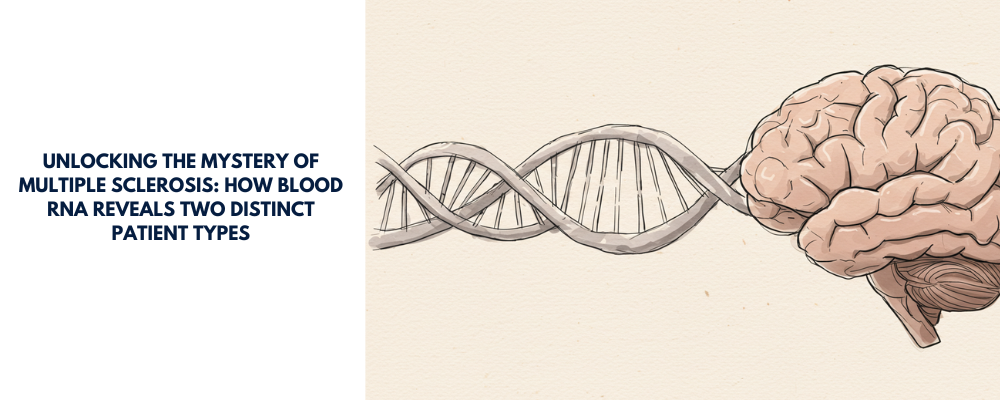
Multiple sclerosis (MS) is a complex, immune-mediated neurodegenerative disease characterized by inflammation and damage in the central nervous system. Clinically, patients present a broad spectrum of symptoms and responses to treatment, making it extremely difficult for doctors to predict the course of the disease—or tailor therapies to individual needs.
But what if a simple blood test could help divide MS patients into biologically distinct groups, giving doctors a tool to anticipate disease activity and choose treatments accordingly?
That’s exactly what a 2012 study led by Linda Ottoboni and colleagues at Harvard and Yale aimed to do. By analyzing RNA from immune cells circulating in patients’ blood, the team identified two biologically distinct subsets of MS patients—each with different levels of disease activity and responses to treatment.
The Study at a Glance
Using RNA profiles from peripheral blood mononuclear cells (PBMCs)—a type of immune cell—the researchers analyzed samples from 363 MS patients. These patients were divided into three groups:
Untreated (n = 141)
Treated with glatiramer acetate (GA) (n = 94)
Treated with interferon-beta (IFN-β) (n = 128)
With the help of unsupervised clustering (specifically, non-negative matrix factorization), they found that each group consistently split into two distinct molecular subtypes, which they labeled MSA and MSB.
MSA vs. MSB: What Sets Them Apart?
The most telling difference? MSA patients had significantly higher expression of genes involved in immune cell activation, especially pathways related to T cell and B cell receptors, as well as other signaling cascades like NFAT, PI3K, and ILK. This suggested a higher degree of immune system activation.
When the researchers followed patients over time, a clear pattern emerged:
MSA patients were significantly more likely to have new inflammatory MS events (such as relapses or new brain lesions) despite being on treatment.
Statistical models showed that MSB patients had a 40% lower risk of experiencing these events compared to MSA patients.
Why This Matters: Toward Personalized MS Treatment
If validated in future studies, this RNA-based signature could become a powerful clinical tool. Here's how:
Early risk stratification: Identify patients likely to have a more aggressive disease course (MSA) even before clinical symptoms escalate.
Tailored therapy: MSA patients might benefit from more potent drugs earlier, whereas MSB patients could avoid unnecessary side effects from aggressive treatments.
Improved trial design: Classifying patients into subtypes could make clinical trials more targeted and efficient.
A Few Caveats
The researchers acknowledged some limitations:
No long-term untreated data: Most untreated patients started therapy shortly after sampling, so the natural history of MSA vs. MSB without treatment remains unclear.
No repeat samples: It's unknown whether patients switch between MSA and MSB states over time.
Signature origins: More work is needed to determine if these gene expression differences are due to increased lymphocyte counts or heightened activation states.
Looking Ahead
This study brings us one step closer to precision medicine in MS, using the language of our own cells—RNA—to understand who we are as patients. It hints that the future of MS care could be as personalized as a molecular fingerprint, guiding doctors not just by what they see on an MRI, but by what’s happening inside a single drop of blood.
Disclaimer: This blog post is based on the information provided in the cited scientific article. It aims to provide an accessible summary of the research findings and should not be considered as definitive medical advice. For any health concerns, please consult with a qualified healthcare professional.
Reference:
Ottoboni, L., et al. (2012). An RNA Profile Identifies Two Subsets of Multiple Sclerosis Patients Differing in Disease Activity. Science Translational Medicine, 4(153), 153ra131. DOI: 10.1126/scitranslmed.3004186
